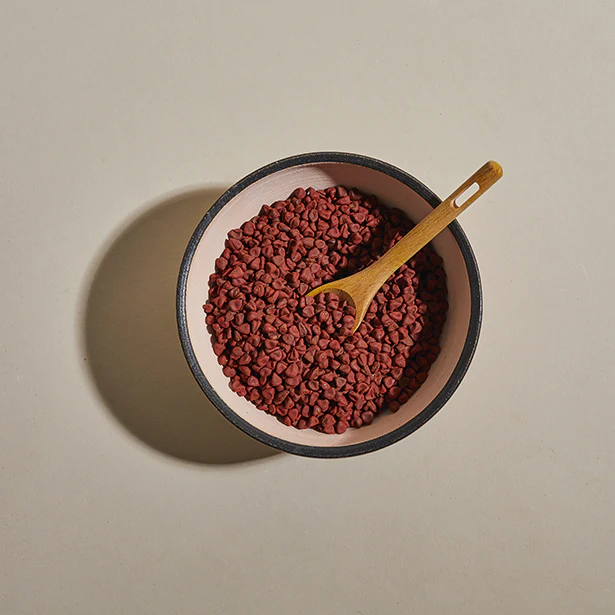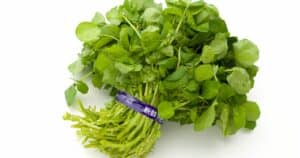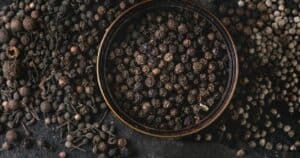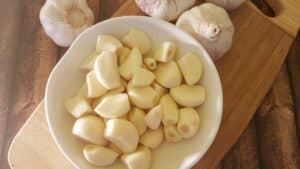Achiote, otherwise known as annatto or roucou, is a versatile culinary ingredient that can add unique flavor and color to your dishes. It’s native to South and Central America tropical regions, including Mexico and the Caribbean islands.
Achiote has a floral scent with notes of pepper and slightly musky undertones. Its flavor is earthy with hints of sweet, smoky nutmeg.
Beyond its uses in cooking, ancient cultures also popularly used achiote as a natural dye for fabrics due to its strong red pigment—which can stain clothing!
As an additional benefit, if you use it for cooking, it’s well known for its nutritional benefits, including antioxidants, vitamins B6 and E, and dietary fiber- an ingredient you should consider incorporating into your meals!
Whether you’re curious about how to use achiote while cooking or interested in learning more about this healthy ingredient- this article will cover what you need to know about this amazing
What Is Achiote?
Achiote, also known as annatto, is a
The seeds are dried and used whole or ground as a culinary
Annatto is an orange-red food coloring or condiment made from the achiote tree seeds (Bixa Orellana), which grows in tropical regions in South and Central America.
It comprises what’s known as “the holy trinity” of seasonings – sofrito, adobo, and sazón – all based on achiote. This seasoning is created by cooking annatto seeds in oil to release their color, then using this orange oil to impart a beautiful yellow hue to dishes like arroz con pollo, pasteles, and many others.
Achiote can be used as a flavoring agent or food coloring, depending on its preparation. When used for flavoring dishes like tamales or tacos, it adds an earthy depth with its nutty undertones that can’t be replicated with other spices alone.
Its use as food coloring imparts an attractive orange-red hue that gives dishes like rice dishes and pasteles their signature look without changing their flavor profile too much.
Achiote’s Flavor Profile And Uses In Cooking
Achiote comes in two forms: paste and powder. The intense color of the
Particular Latin American or Caribbean meat or rice dishes require this
The paste form of this
In addition, it can be used to make rubs for meats like pork or chicken that are then grilled or baked for added flavor. It can also be used in soups and stews, adding flavor and color to the dish.
For those looking for an exciting twist on traditional recipes, adding some achiote will give them something unique without overpowering other flavors in the dish.
Achiote has many uses beyond just adding flavor and color to food; it can also be used as a dye for cotton, wool, silk, linen, rayon, and nylon fabrics with bright orange-red hues that last through multiple washings without fading away quickly.
It is also widely used in cosmetics such as lipsticks due to its vibrant orange-red hue, giving lips an attractive look without overpowering.
Popular Dishes That Use Achiote
Achiote’s distinct earthy flavor and deep red color make it a staple ingredient in many classic dishes such as:
Pollo Asado (Roast Chicken)

Pollo Asado is a delicious main course made by marinating chicken in a mixture of achiote paste and other spices such as garlic and oregano. The marinated chicken is then roasted until golden brown and juicy, resulting in a flavorful dish that’s hard to resist.
Yellow Rice
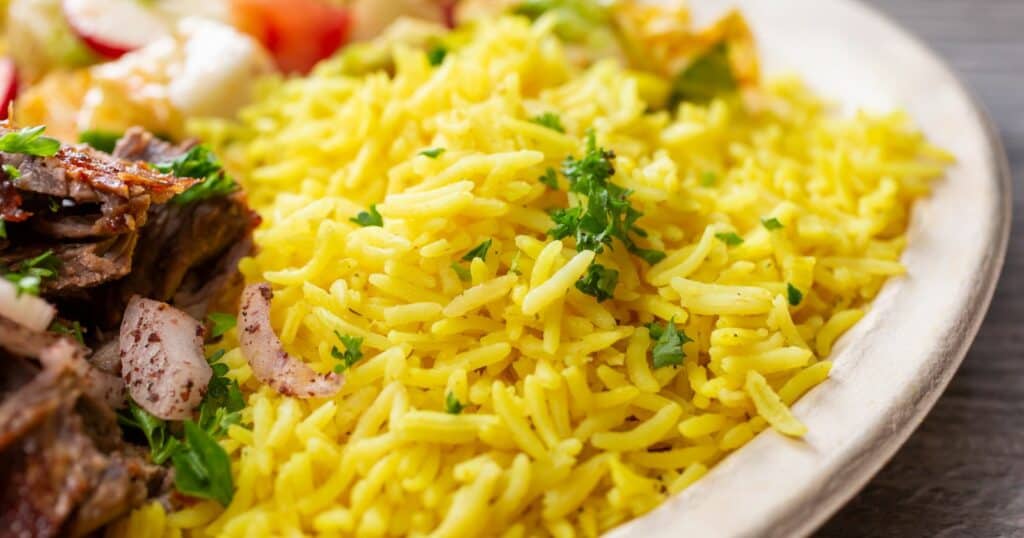
Yellow rice is a classic dish made by cooking long-grain rice with saffron threads or turmeric powder, along with onion, garlic, and bell pepper for flavor. Adding achiote paste to the dish gives it an earthy flavor profile and its characteristic yellow color, making it a delicious side dish to serve with grilled meats or seafood.
Achiote is also used in mole sauce, tamales, cochinita pibil, and certain stews and bean dishes, adding unique flavor and color. Whether used in a marinade, dry
Achiote As A Natural Dye
Achiote has many unique properties, making it an excellent natural dye for various applications. For starters, it is highly resistant to light and heat, making it ideal for use in food products that must be stored for long periods without losing color.
Its bright red hue makes it perfect for adding vibrant colors to dishes or fabrics without using harsh synthetic dyes or chemicals. Furthermore, due to its natural origin, it does not contain harmful substances that could harm people or the environment when used in textile production processes or when consumed in food products.
When using achiote as a natural dye, several things should be considered, such as the concentration of the dye solution required and the type of material being dyed.
For example, if you want bright colors on fabrics, you will need higher concentrations of annatto extract than if you were looking for more subtle tones on food items such as rice or pasta dishes.
Additionally, depending on what type of material you are trying to dye with annatto extract, you may need additional steps, such as pre-treating fabrics with mordants before applying the dye solution to absorb more colorant molecules from them the solution and achieve brighter results when finished drying them out afterward.
When using achiote as a natural dye, it’s essential to consider these precautions:
- Wear protective gloves when handling annatto extract solutions to avoid skin irritation.
- Store solutions away from direct sunlight to prevent loss of potency over time
- Do not mix different dyes to avoid unexpected results from a chemical incompatibility between the molecules.
Achiote’s Health Benefits
Not only does it provide a mild flavor and vibrant color to dishes, but it also offers a range of health benefits. Achiote is rich in antioxidants which can help protect cells from damage and reduce the risk of certain diseases. It is also considered a diuretic with antibacterial properties that can help treat various ailments.
Achiote can treat gastrointestinal issues such as constipation, dysentery, and gonorrhea. It is also an effective expectorant for young children suffering from colds or flu-like symptoms.
The pulp of the achiote fruit can be used to stop bleeding and reduce fever when applied topically on the skin or consumed orally as a tea or decoction.
In addition to its medicinal properties, achiote is known for its anti-inflammatory effects, which can help relieve pain associated with arthritis and other joint problems.
Studies have shown that consuming achiote regularly may reduce inflammation, helping to improve overall health and well-being. Furthermore, regular consumption of this
Achiote is beneficial for physical and mental health; studies have found that consuming this
Furthermore, research suggests that regular consumption of achiote could potentially boost cognitive function by improving focus and concentration levels due to its antioxidant content which helps protect brain cells from damage caused by free radicals.
How To Use Achiote In Cooking
Achiote can be used in a marinade or dry
To make an achiote paste, grind annatto seeds and mix them with cumin, pepper, coriander, oregano, cloves, and garlic.
This mixture adds both flavor and yellow-orange color to foods. Achiote paste can also be used as a marinade for meats such as chicken or pork before grilling or roasting them. You can add it to soups or stews for flavor and color.
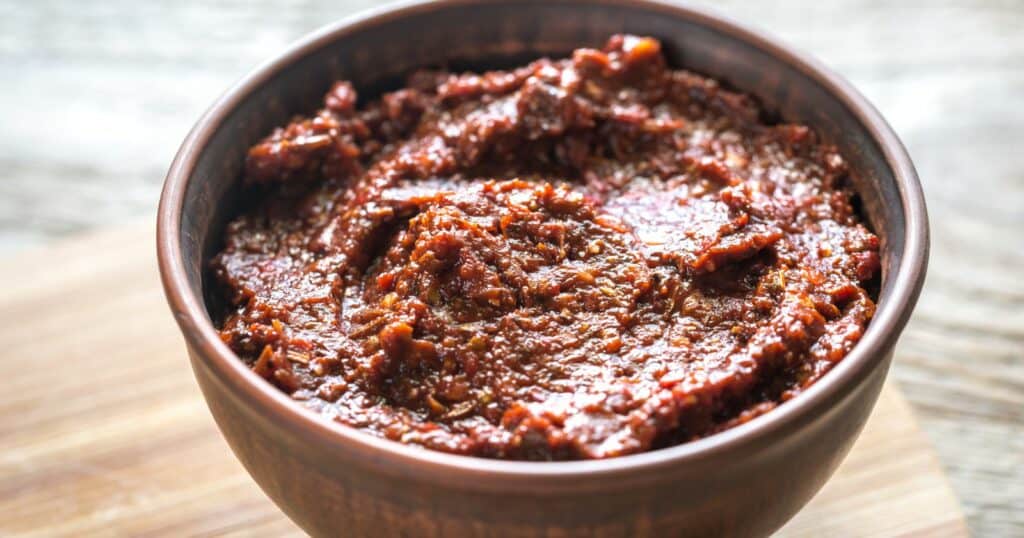
Another way of using Achiote is by making an adobo sauce commonly used in Central Mexico as part of adobo marinades for meats like chicken or pork shoulder.
To make the adobo sauce, you will need to combine the ground annatto seeds with other ingredients such as garlic powder, onion powder, oregano leaves, and cumin powder, along with olive oil and vinegar into a blender until it forms a thick paste-like consistency that can then be rubbed onto the meat before cooking it either on the stovetop or oven-roasted at high temperature until cooked through thoroughly.
You can also use Achiote when making tacos by mixing some of the paste into your taco filling and other seasonings like chili powder for added flavor and heat while keeping its signature yellow-orange hue intact throughout your dish!
Additionally, you could sprinkle some ground annatto over cooked vegetables like sweet potatoes before serving them up – this will give them an extra burst of flavor while still maintaining their vibrant colors!
Achiote Substitutes
Achiote is a crucial ingredient in Mexican and Caribbean cooking, particularly in the Yucatan region, providing a smoky flavor. When you can’t find achiote powder, consider these substitutes:
Homemade Ground Annatto Seeds
Annatto seeds, ground into a powder, make a fantastic substitute for achiote powder, offering an earthy taste similar to achiote.
Sazon
Sazon is a popular blend of achiote, garlic powder, cumin, coriander, oregano, and salt, ready to use in small foil packets. It provides extra flavor to your dish, but may be harder to find than regular achiote powder.
Smoked Paprika
Smoked paprika is a great substitute for achiote powder, providing a smoky flavor similar to achiote without the earthy notes of annatto seeds or Sazon products. It also works well in stews or soups, adding extra depth of flavor.
Turmeric
If you prefer an earthy flavor, like annatto seeds, try using turmeric instead of achiote powder. Turmeric won’t provide the smokiness of smoked paprika, but it will give your dish a similar earthy note to annatto seeds or Sazon products.
Chili Powder
For a spicy kick, consider using chili powder instead of achiote powder or any other substitutes mentioned above. Chili powders come in varying levels of spiciness, so choose one that fits your taste preferences best!
These substitutes offer a range of flavors to enhance your dish, whether you’re looking for smoky, earthy, or spicy notes.
Where to Buy Achiote?
Achiote is commonly available at Latin American, Mexican, or Caribbean grocery stores. You can also find it at specialty
If you cannot find achiote locally or online, you can try looking for annatto seeds, which can be ground into a powder to make a homemade achiote substitute.
Annatto seeds come from the tropical achiote tree. Their taste is nutty and mildly peppery. As a paste they add depth to Mexico s spicy cochinita pibil and to many Caribbean dishes.


